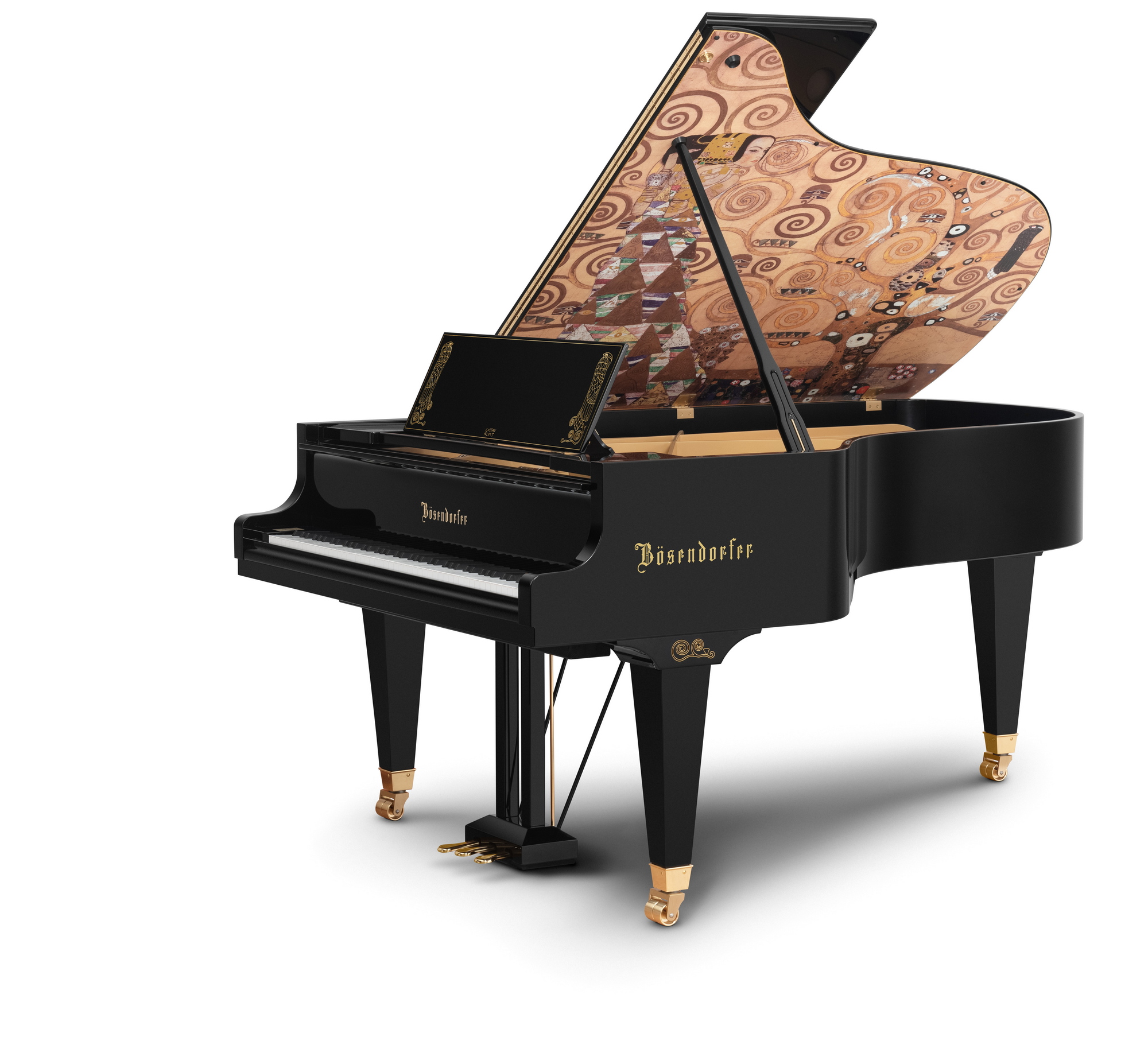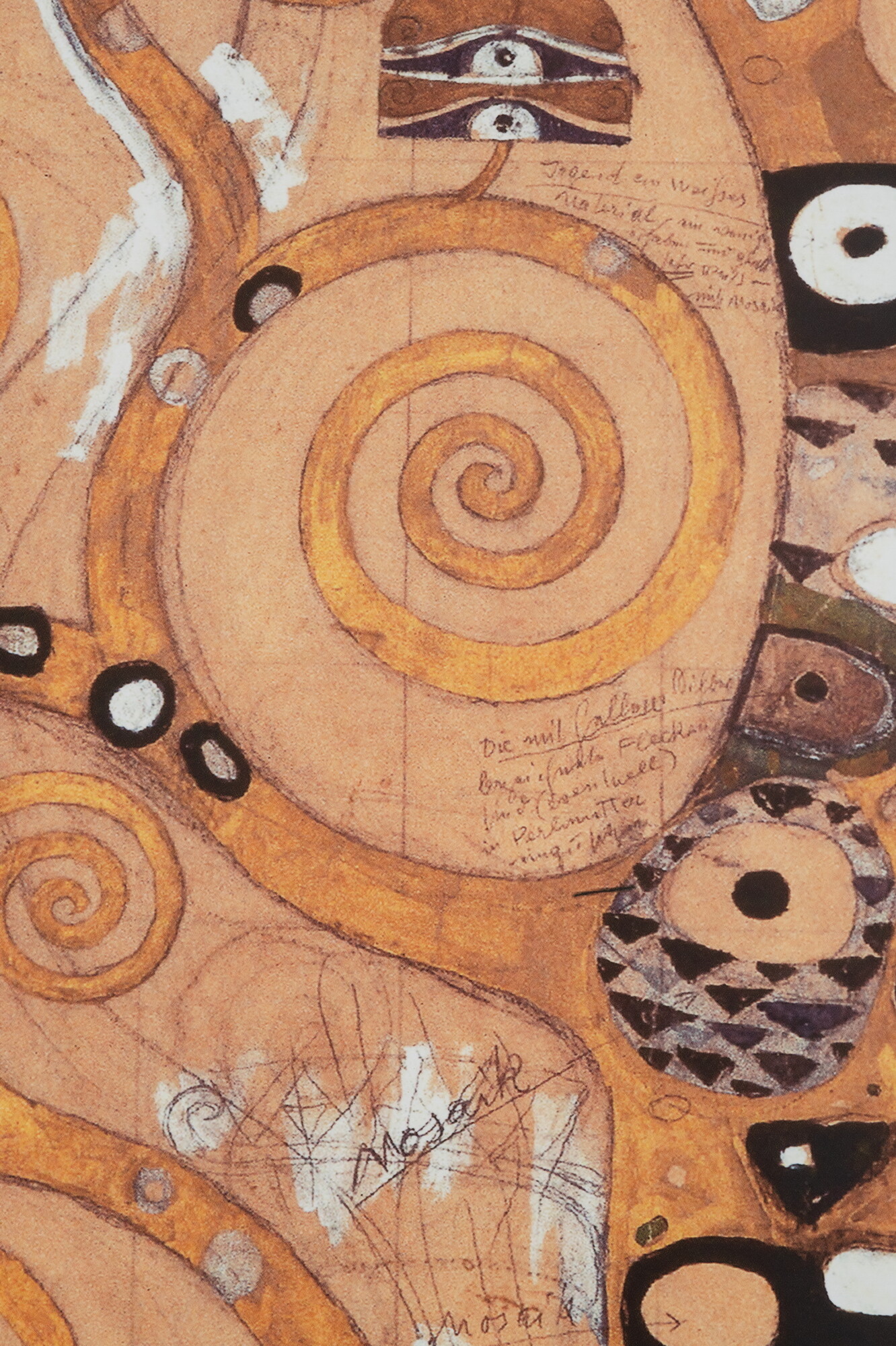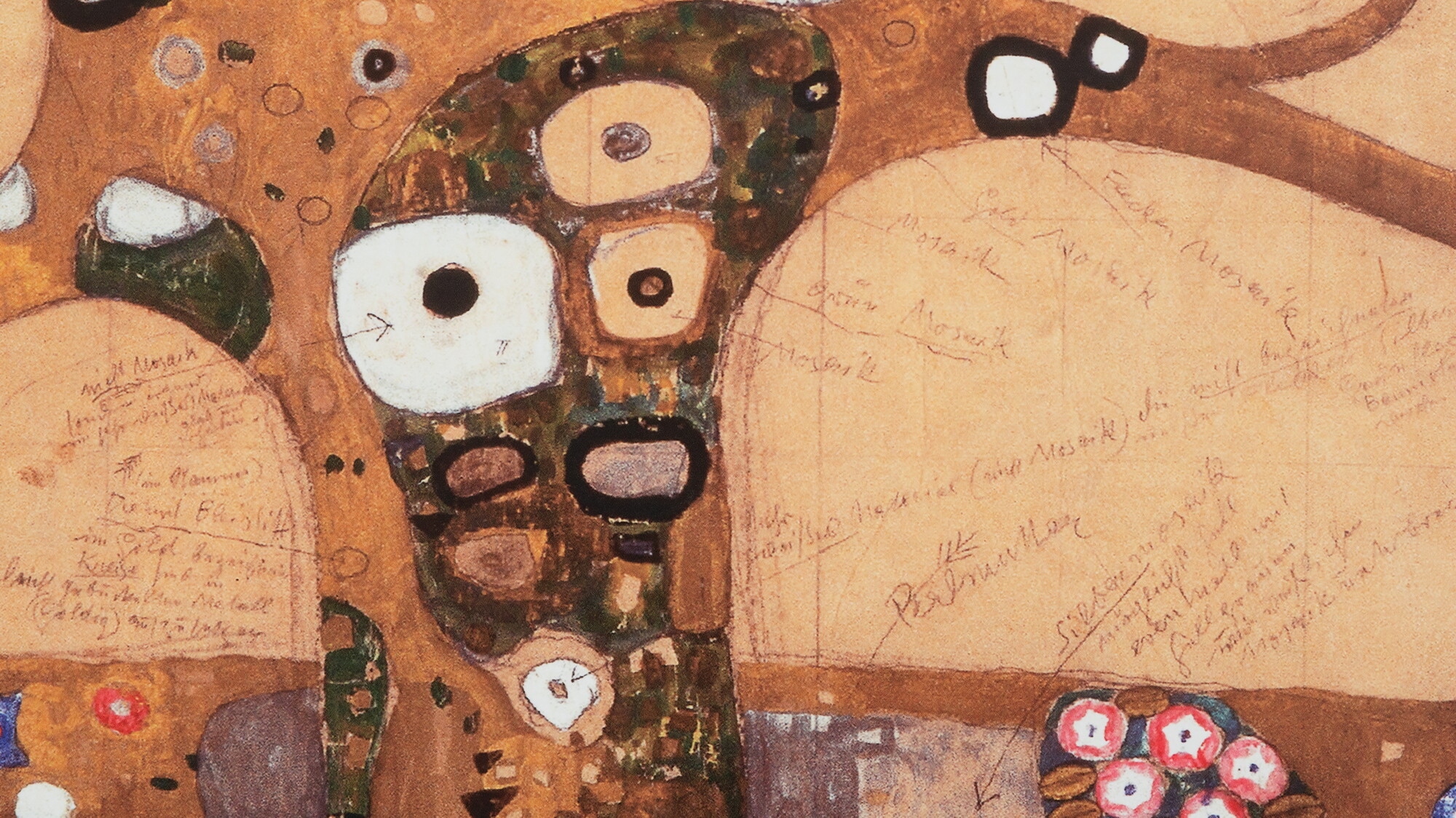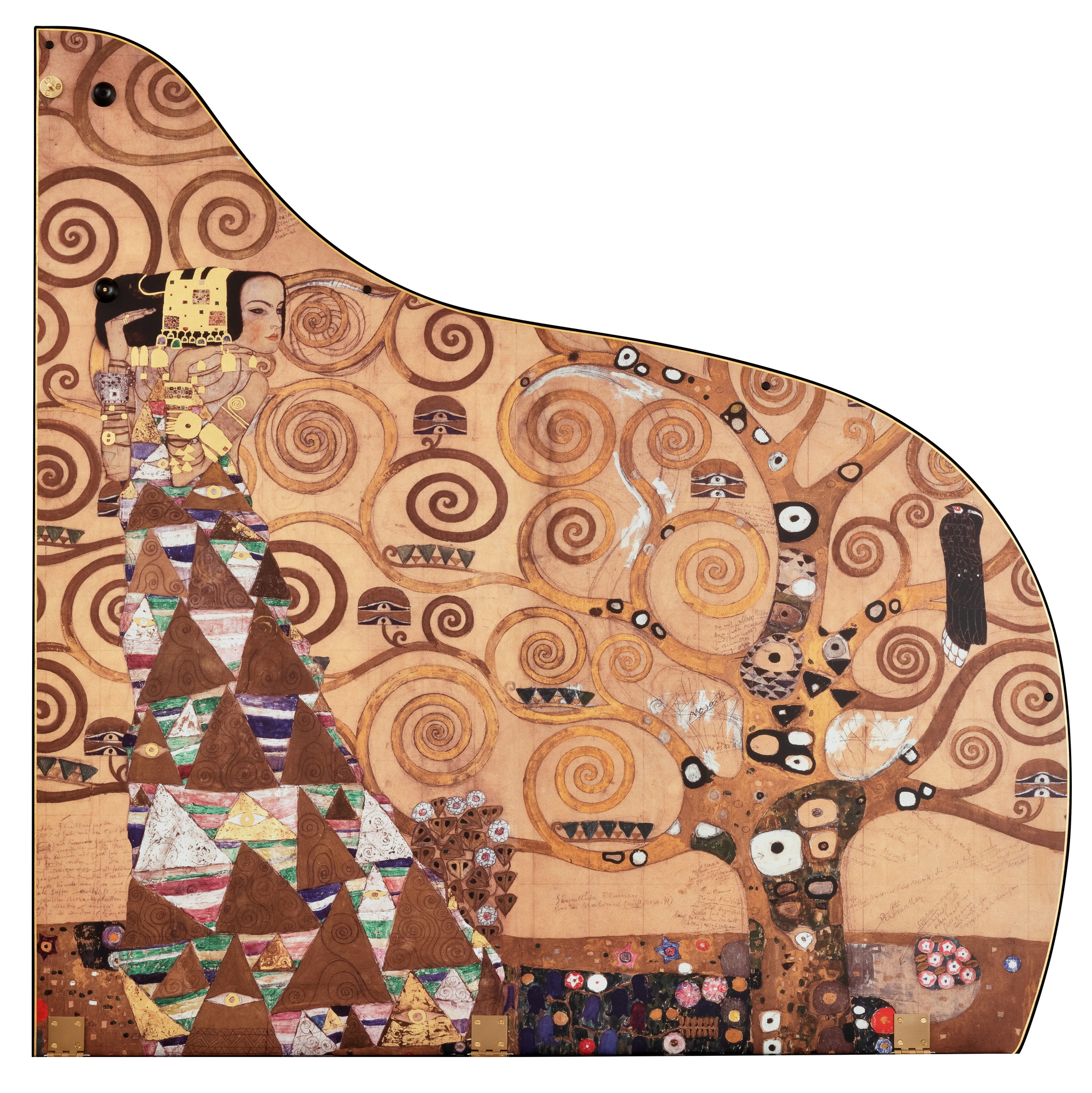Tree of Life
The new Collector's Item Grand Piano from the Bösendorfer Artist Series Gustav Klimt

Unique Work of Art by the world Artist Gustav Klimt and main work of his "Golden Period"
Klimt's Tree of Life is a seminal work from his “Golden Period” and is still considered the high point of his artistic development.
For this monumental frieze he produced equally impressive full-scale drawings. Revised several times, the drawings even contain Klimt’s own handwritten notes and directions for the development of the individual mosaic pieces. Totally unique, they are now considered works of comparable artistic merit to the frieze itself, and are on permanent display at the MAK (Museum of Applied Arts) in Vienna. Klimt’s frieze symbolizes the cycle of life, and how all forms of matter interrelate and influence one another.
The Clients Adolphe and Suzanne Stoclet were wealthy Belgian art patrons, who resided in Vienna from 1903-1904. They soon became acquainted with the most exciting artists of the time, such as Gustav Klimt and the architect Josef Hoffmann. They eventually commissioned Hoffmann and his Wiener Werkstätten to build and furnish a palatial residence in Brussels. Hoffmann designed a strikingly modern city mansion with the all comforts and amenities of a country house. It was intended to not only house the Stoclets' extensive art collection, but to serve as a physical representation of it. As the artistic highlight of the many grand reception rooms, the dining room stages a perfect interplay of various art forms, whose combination of effects produce a striking whole.
Klimt's frieze, Hoffmann's architecture and the furniture of the Wiener Werkstätten have made this dining room one of the most famous interiors of the 20th century. The Stoclet Palace remains privately owned to this day and has never been open to the public. This has undoubtedly lent Klimt’s drawings an even greater importance.


Handwritten Notes and Fingerprints
From his time as a mural painter, Klimt had mastered the technique of drawing with a square grid on paper. For the Stoclet dining hall, the dimensions of the paper corresponded exactly to the dimensions of the mosaic. For these full-scale drawings, Klimt chose tracing paper. While completing his designs with water-based gouache paint, the paper warped and buckled, thereby altering its dimensions. To compensate for this, the paper was laminated onto canvas. This in turn resulted in wrinkling, and various cuts and interruptions to the design itself.
Klimt revised his drawings over and over. To make corrections he would use white paint and paint over areas already drawn or developed. Either that, or he would simply cross the affected areas out. In addition to gold, silver and bronze, Klimt also used platinum in metal leaf form. The drawings also served as instructions for the development of the mosaic. Klimt noted his exact ideas concerning materials and execution directly onto the corresponding areas of the drawings: "The areas marked with light silver are to be completed (most probably) in mother-of-pearl". The drawings laminated onto canvas could be easily rolled up, and were sent back and forth several times between the various arts and crafts workshops and Klimt's own studios in Vienna and on Lake Attersee, to impart and exchange information.

The Bösendorfer Tree of Life Grand Piano
With the Tree of Life Grand Piano from our Collector’s Item Artist Series, we honor Gustav Klimt not only as one of the most important Austrian painters. With his interdisciplinary works and their ancient oriental, early Christian and East Asian influences, Klimt was already in his own lifetime an artist of world renown.
For this piano we transfer imagery from “The Tree of Life” and the "Expectation" from the original drawings to the piano lid interior by means of an elaborate reprography technique. The jewellery of the young woman from "Expectation" has been intricately hand-gilded in the finest 23 carat gold leaf. The inner rim of the piano is finished in matt black, and, together with the colour-coordinated cast iron frame, enhances the luminosity of the imagery on the lid interior. The music stand uses further elements from the Tree of Life, including the striking Horus falcons, in ornamental form. As a collector's item, the Tree of Life Grand Piano is limited to 25 instruments worldwide, each with its individually numbered brass plaque.
The handwritten notes of the drawings from the Tree of Life make this work not only a unique contemporary witness, but provide a rare insight into Klimt’s creative process. Connected to heaven, earth and the underworld, the Tree of Life represents the cycle of life, of growth, strength and health. The Bösendorfer Tree of Life is availabe as Grand Piano 214VC and Concert Grand 230VC Vienna Concert. Austrian culture on all levels – artistically, technically, musically.
Bösendorfer Concert Grand Piano 230VC


Bösendorfer Grand Piano 214VC


Resonance Case Principle
DetailsFrom delicate pianissimo to splendid fortissimo
DetailsUnique bass strings
DetailsIndependent Capo d’Astro
DetailsTraditional Sand Cast
DetailsOpen pinblock
DetailsNature
DetailsMade in Austria
DetailsVienna Concert
DetailsCollector's Item
DetailsDisklavier Edition
DetailsSilent Edition
DetailsConcert Grand
DetailsGrand Piano
DetailsProduct changes reserved. Photos of products, colours and veneer patterns shown serve as sample. The actual colour of the selected materials may differ.